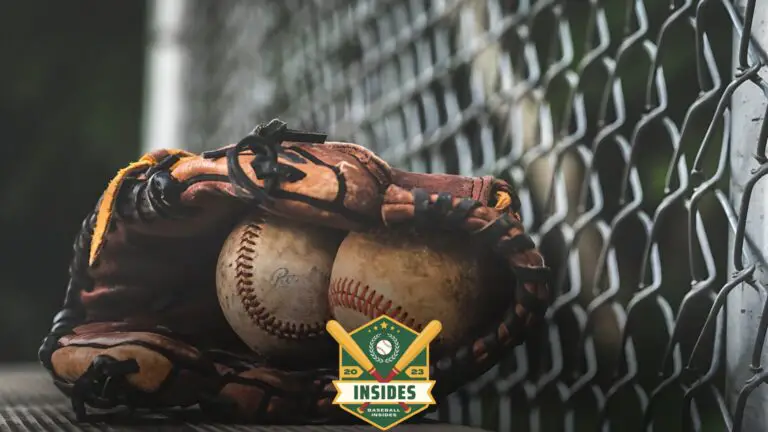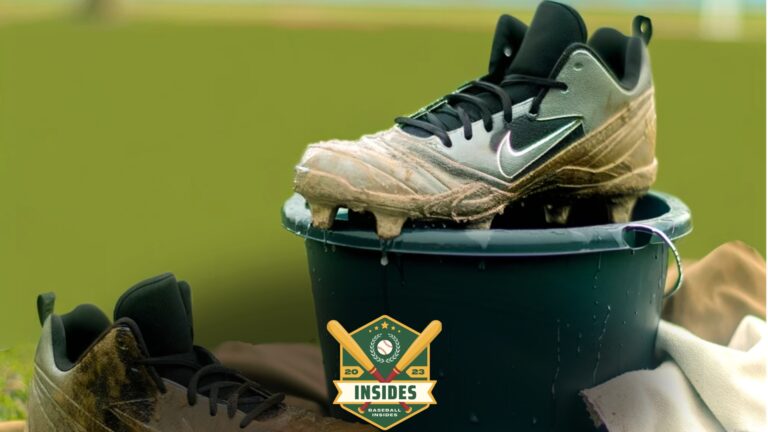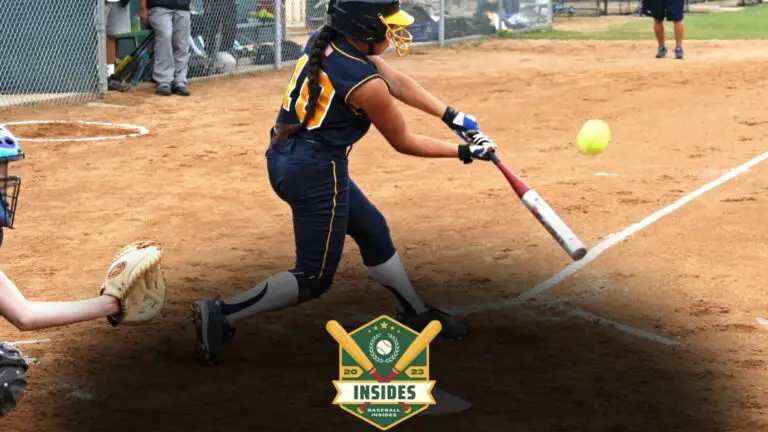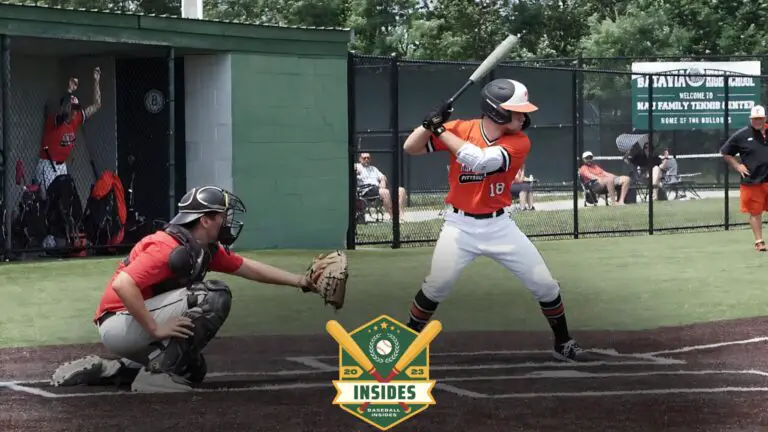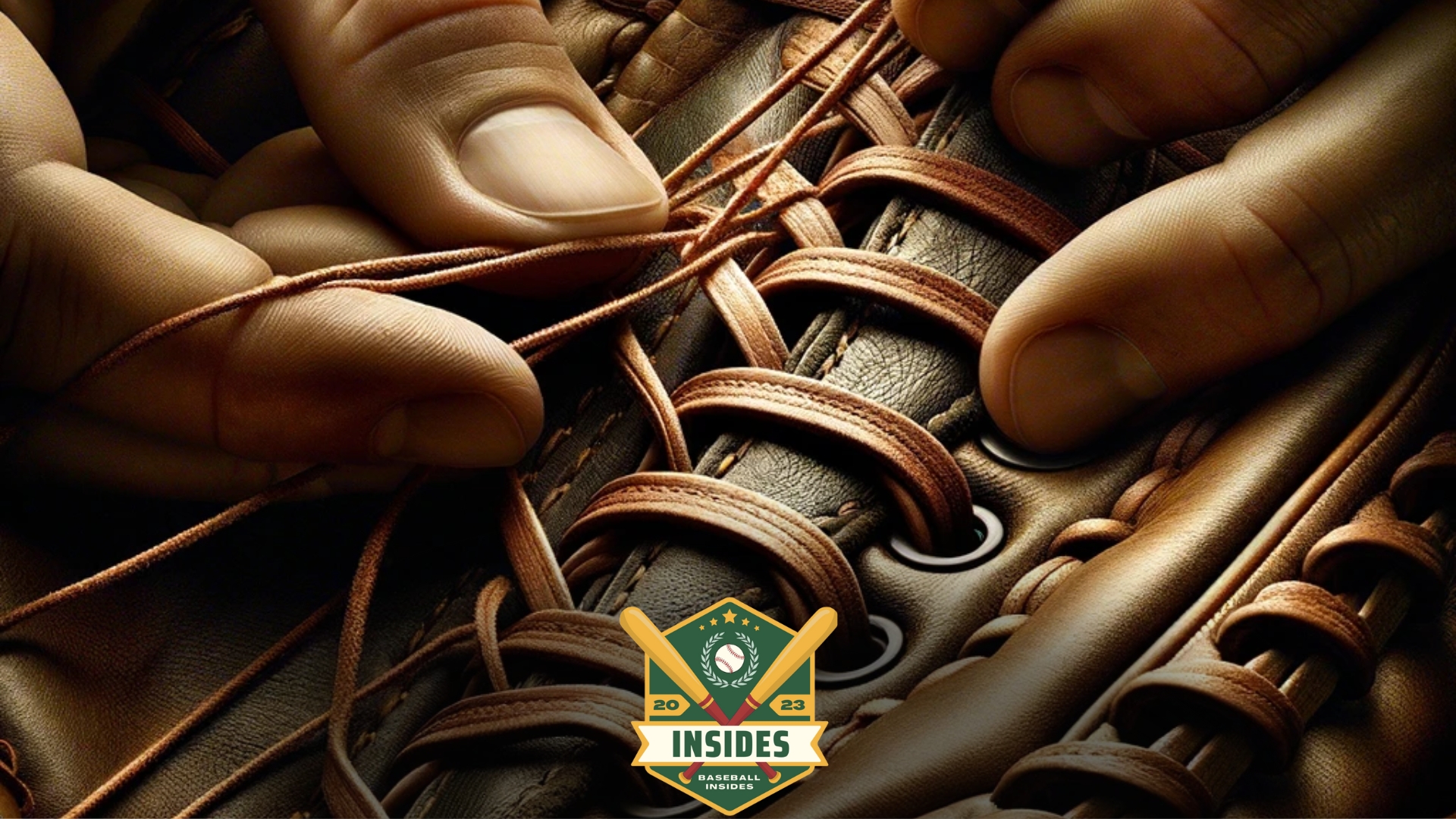
In this article:
To tie baseball glove laces, double knot them and apply a small amount of glove conditioner. Ensure the laces are tight and secure before each use.
Maintaining the integrity of baseball glove laces is crucial for players at all levels. A well-kept glove ensures reliable performance, safety on the field, and gear longevity.
Over time, laces can become loose, leading to mishaps during play and potentially affecting the game’s outcome.
Tight, well-tied laces provide the structure necessary for optimal glove function, enabling players to catch and control the ball effectively. Consistent glove maintenance, which includes checking and securing laces, is an essential habit for any serious player.
By keeping the laces tied and in good condition, athletes can focus on their performance, knowing their equipment won’t disappoint them.
The Importance of Secure Glove Laces in Baseball
Keeping glove laces tied proves crucial in baseball. Players rely on well-maintained gloves for effective catching and fielding.
Secure laces prevent the glove from unfolding unexpectedly. This ensures a smooth, uninterrupted game.
Let’s examine the implications of secure glove laces further.
Safety Considerations
Baseball involves rapid movements and split-second decisions. Loose laces can lead to accidents. They create a risk of injury not just for the player but also for their teammates.
Ensuring laces are tied tightly reduces the likelihood of a glove coming apart during play, which could potentially cause mishaps on the field.
- Avoid tripping over undone laces during plays.
- Prevent fingers from getting trapped in loose laces.
- Decrease the chance of dropping the ball due to a loose glove.
Impact on Performance
Performance in baseball hinges on precision. Every component of a player’s equipment can affect their game. Secure glove laces guarantee a consistent shape and fit.
This allows players to focus entirely on the game without distraction. A correct glove can differentiate between a winning catch and a missed opportunity.
- Ensure a snug fit for better glove control.
- Maintain glove integrity for consistent performance.
- Enhance confidence by eliminating equipment concerns.
Players can significantly benefit from secure and reliable glove laces through proper maintenance and attention to detail.
Anatomy of a Baseball Glove
The baseball glove, an essential tool on the diamond, is more than stitched leather. The glove’s integrity hangs on something less noticeable but crucial: its laces.
Properly tied laces ensure peak performance and longevity. Diving into its anatomy will better our understanding and maintenance practices.
Understanding Glove Laces
Glove laces thread through the fingers, thumb, and other glove parts. They hold the structure together. Quality lacing prevents gloves from falling apart during play.
Over time, laces may loosen. Regular checks and adjustments save players from mid-game surprises.
- Check laces before each use.
- Look for fraying or loosening.
- Adjust and secure as needed.
Materials Used in Lacing
Lace material influences durability and flexibility. Most laces come from leather or high-grade synthetics.
Leather offers a classic feel but requires more care. Synthetics can endure harsh conditions better.
| Material | Features | Care Needed |
|---|---|---|
| Leather | Comfort, traditional grip | Regular conditioning |
| Synthetics | Weather resistance | Minimal maintenance |
Select laces based on personal preference and maintenance willingness. Both materials have benefits. The key is keeping them tied and treated for the best results.
Tying Techniques for Longevity
The difference between a secure glove and one that fails mid-game often lies in the tiny details, specifically, how you tie the laces.
Proper tying techniques ensure the glove stays snug on your hand and extends the life of your laces.
Let’s explore the knots that keep you in the game longer.
Standard Knots Versus Specialized Knots
Many players default to the knots they know, such as the ones used for shoes, but baseball glove laces can benefit from more tailored approaches.
Specialized knots consider baseball’s unique stresses, leading to improved durability and glove performance.
- Standard Knots: Quick and familiar, yet may come loose with active play.
- Specialized Knots: Designed for gloves, stay tight and withstand pulling and twisting.
Step-by-step Guide for a Durable Knot
Follow this guide to ensure your glove laces remain tied:
- Start with a simple overhand knot. This forms the base of your durable knot.
- Form a loop with one end of the lace while holding the other tight.
- Wrap the free end around the base of the loop twice, creating what is known as a double overhand knot.
- Pull the free end through the loops you created, ensuring you have enough lace to tighten fully.
- Tighten the knot by pulling both ends simultaneously. Ensure the final knot sits flat against the glove.
A tight, secure knot will keep your glove functional and ready for action. With these techniques, you can confidently step onto the field, knowing your glove won’t disappoint you.
Maintenance Tips for Glove Laces
Maintenance Tips for Glove Laces are crucial for any baseball player. Glove laces hold the glove together. They need care to last long.
Proper maintenance improves performance. It ensures the glove remains in top shape game after game.
Regular Cleaning Practices
Keeping glove laces clean extends their life. Dirt and grime cause damage. A simple routine helps:
- Wipe laces with a damp cloth after every game.
- Use a soft brush to remove embedded dirt.
- Avoid harsh detergents; they can dry out leather.
- Dry laces naturally, away from direct sunlight.
Conditioning to Prevent Breakage
Glove laces need conditioning. It keeps them flexible. Use these steps:
- Apply a quality leather conditioner sparingly.
- Massage into laces in a circular motion.
- Let it absorb for a few minutes.
- Buff off any excess to avoid buildup.
Regular conditioning fights off dryness. It prevents the laces from becoming brittle. Soft laces tie easily and stay secure during play.
Troubleshooting Common Lacing Issues
Ensuring your baseball glove is in top condition is crucial for performance. Laces can become untied or loosened, affecting your game.
Let’s tackle the common lacing trouble and confidently keep you on the field.
Re-tightening Tips for Game Day
Game day means your glove must be ready. A glove with loose laces can impact your play substantially.
Here’s how to ensure a secure fit before you step onto the field:
- Inspect laces thoroughly for any signs of looseness.
- Use a lace-tightening tool or a flat-head screwdriver to adjust the laces.
- Slightly moisten leather laces for better pliability.
- Pull each lace tight, starting from the fingers to the wrist.
- Secure a knot at the end of each lace to prevent slippage.
Always double-check your work for supreme game-day readiness.
When to Replace the Laces
A stitch in time saves nine. Knowing when to replace your laces can save your game. Look out for these signs:
| Signs | Action |
|---|---|
| Visible wear and tears | Time for new laces |
| Permanent stretching | Replace to avoid mishaps |
| Fraying edges | Don’t wait; replace it now |
Get quality leather laces that are designed for baseball gloves. They will last longer and perform better.
Learning From the Pros
Welcome to ‘Learning from the Pros’, where aspiring athletes uncover the secrets behind the exquisite care big leaguers give to their gear.
We’ll mainly dive into the art of tying baseball glove laces. These insights come straight from the diamond and can significantly impact your game.
Professional Insights on Glove Care
Elite players know that a well-maintained glove is a key to performance. Maintaining laces comes first. Pros often use a lace conditioning product to prevent the leather from drying and becoming brittle.
They recommend regularly conditioning the laces, especially after exposure to dirt or moisture.
- Clean laces with a soft cloth.
- Dry them carefully after exposure to wet conditions.
- Apply lace conditioner periodically to keep them supple.
Adopting Habits From Experienced Players
To avoid the annoyance of undone laces, mimic professional players’ habits. First, they ensure a secure initial knot with a double-tie technique.
Then, they check for any signs of wear or fraying before each game.
- Tighten all the laces, ensuring they have equal tension.
- Double-knot at key stress points.
- Inspect laces for damage regularly.
- Replace them immediately if there’s noticeable wear.
To the loop on the pinky hole. This simple trick keeps the lace from coming loose.
Frequently Asked Questions
How Do You Tie Baseball Glove Laces?
To tie baseball glove laces, thread the lace through the bottom eyelets. Cross-lace up the fingers and thumb, ensuring a snug fit. Finish with a double knot at the end for security. Regularly maintain laces to preserve glove condition.
Should You Tighten Baseball Glove Laces?
Yes, you should tighten your baseball glove laces to ensure a snug fit and maintain optimal control and performance. Regular adjustments prevent the glove from becoming too loose over time.
How Do You Tighten the Strings on a Baseball Glove?
To tighten baseball glove strings, locate the leather laces needing adjustment. Pull and work the slack through the glove’s laces, knotting securely at the end to maintain the new tension. Regular maintenance ensures a snug fit and optimal performance during play.
How Do You Tie a Baseball Glove Thumb Loop?
To tie a baseball glove thumb loop, thread the lace through the loop’s holes, forming an X pattern. Pull tightly and finish with a secure knot.
What Causes Baseball Glove Laces to Untie?
Over time, glove laces loosen from the constant motion and impact of catching, which gradually unties the knots.
Conclusion
Securing your baseball glove laces is key to optimal performance on the field. With the right knots and ongoing care, your glove can become a reliable extension of your hand.
Practice these techniques regularly to ensure your glove is always game-ready.
Keep stepping up your game – tie it right, play it right.

